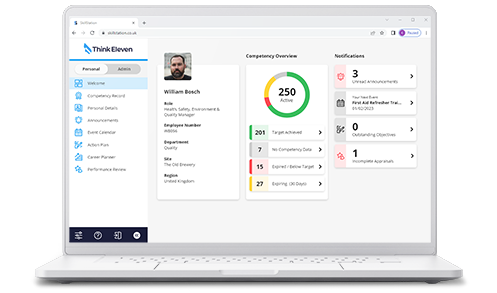Design Thinking Bundle eLearning Course
Course Overview
You’ve probably heard the term “Design Thinking” around your workplace lately. But what exactly is Design Thinking, and how is it bringing benefits to companies and individuals who work outside of the design realm? The Design Thinking course bundle will clue you in to one of the biggest trends in problem solving approaches utilized by successful companies today. You’ll build your skills in the Design Thinking process, allowing you to effectively tackle challenges with a human-centric approach, reaping benefits for both customers and clients as well as coworkers and teammates.
Audience
Individual
Learning Outcomes
After completing this Design Thinking course, you'll be able to:
- Explain the benefits of Design Thinking
- Identify current trends in Design Thinking
Course Content
Module 1 - Why Design Thinking?
Why are more and more industries talking about Design Thinking these days, and what benefits can it bring to your organization? In this course, you'll learn about the philosophy of Design Thinking to prepare you to implement it successfully in your own work.
Module 2 - What is Design Thinking?
Why are more and more industries talking about Design Thinking these days, and what benefits can it bring to your organization? In this course, you'll learn about the philosophy of Design Thinking to prepare you to implement it successfully in your own work.
Module 3 - The Design Thinking Process: Empathize
The first stage in the Design Thinking process, Empathize, involves getting to know your end users and their experience in detail. This stage is crucial in order to develop a truly effective human-centric solution. Learn how to conduct the tasks of this phase and strategies for their execution.
Module 4 - The Design Thinking Process: Define
The second stage in the Design Thinking process, Define, involves specifying the exact issue or challenge for which you are trying to create a solution. Learn how to conduct the tasks of this phase and strategies for their execution.
Module 5 - The Design Thinking Process: Ideate
The third stage in the Design Thinking process, Ideate, involves using the information gathered and deduced from the previous two stages to come up with several different ideas for potential solutions. Learn how to conduct the tasks of this phase and strategies for their execution.
Module 6 - The Design Thinking Process: Prototype
The fourth stage of the Design Thinking, Prototype, you’ll start bringing your ideas to life by creating some sort of physical representation of them. The goal is to test the design of your solutions as much as possible to gather feedback and impressions, without investing a large amount of time or resources to build completely finished versions.
Module 7 - The Design Thinking Process: Test
The last stage in the Design Thinking process, Test, putting your solution in the hands of your users and observing its effectiveness. Learn how to conduct the tasks of this phase and strategies for their execution.
Module 8 - Applications of Design Thinking
Where can Design Thinking be applied besides traditional design-oriented sectors? In this last course of the Design Thinking series, we'll take a look at real world examples of how Design Thinking has been applied to diverse challenges across several different industries.
Action Learning
Vado e-learning courses help you to "learn by doing". Applying action learning and the "70 : 20 : 10" model for learning and development (70% of learning comes from challenging assignments, 20% from developmental relationships and 10% from coursework/training), Vado courses are designed to leverage the all-important 70% so that you can learn through action, experience and knowledge application. During the course you can expect to be asked to "break off" to undertake related tasks, try things out for real and reflect on the experience.
Features
Built to meet the way most people learn (on the job), each Vado course provides learners with tutorial videos, a course 'Introduction Video', downloadable job aids, and an exercise to perform on the job to practice and build the desired skill. With mobile responsive courses designed to work on any mobile device and any screen size, learners will be able to develop anytime, anywhere, and when the learner is ready.
This course has a minimum of 25 learner registrations for us to provide a quotation.
Request a Quotation- Language
- UK
- Date last updated
- 10/12/2020
- Duration
- 4 Hours
- Suitable Devices
-
- PC
- Phone
- Tablet
- Audio is Required
-
- Yes
- Includes Video
-
- Yes
- Downloadable Resources
-
- Job AiD
- Completion Criteria
-
- Visit all pages
- Pass Mark
-
- 50% pass mark required
- Course Technology
-
- HTML5
- SCORM 1.2
- Can be customised
-
- Available at an Additional Cost
- Accreditation or Endorsements
-
- No
- Languages
-
- English (US)
